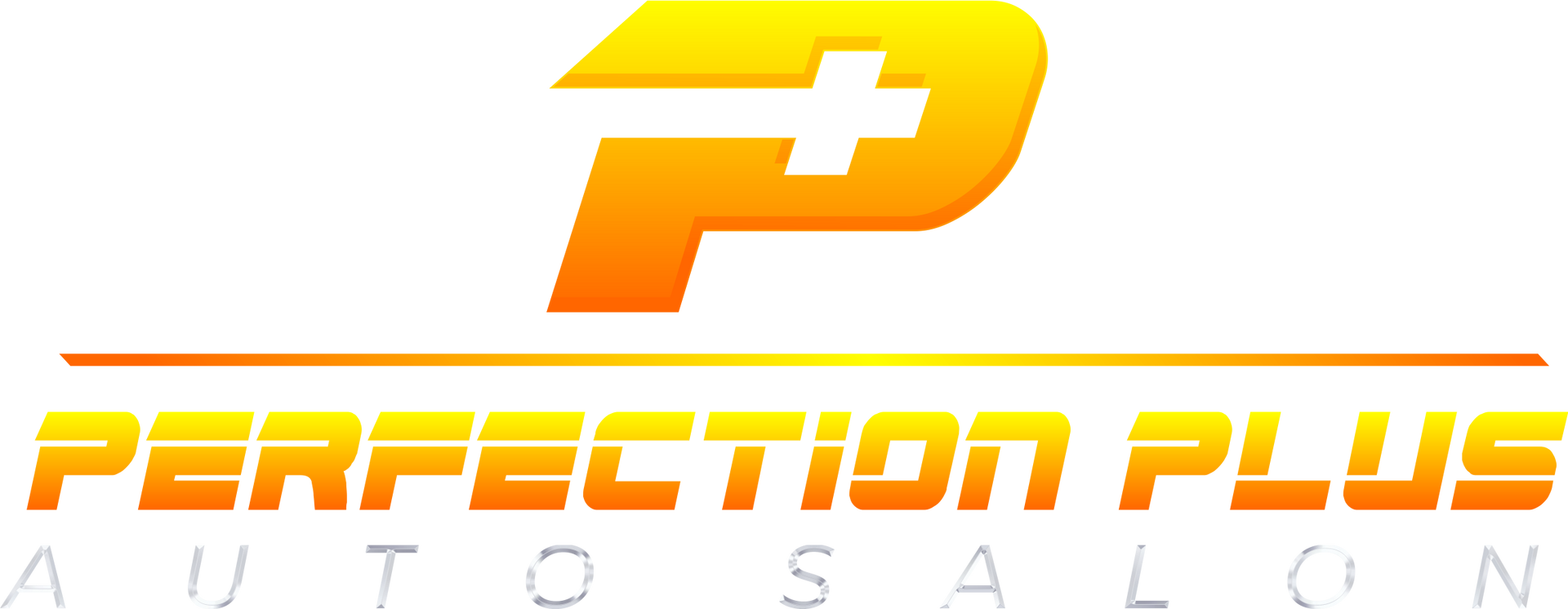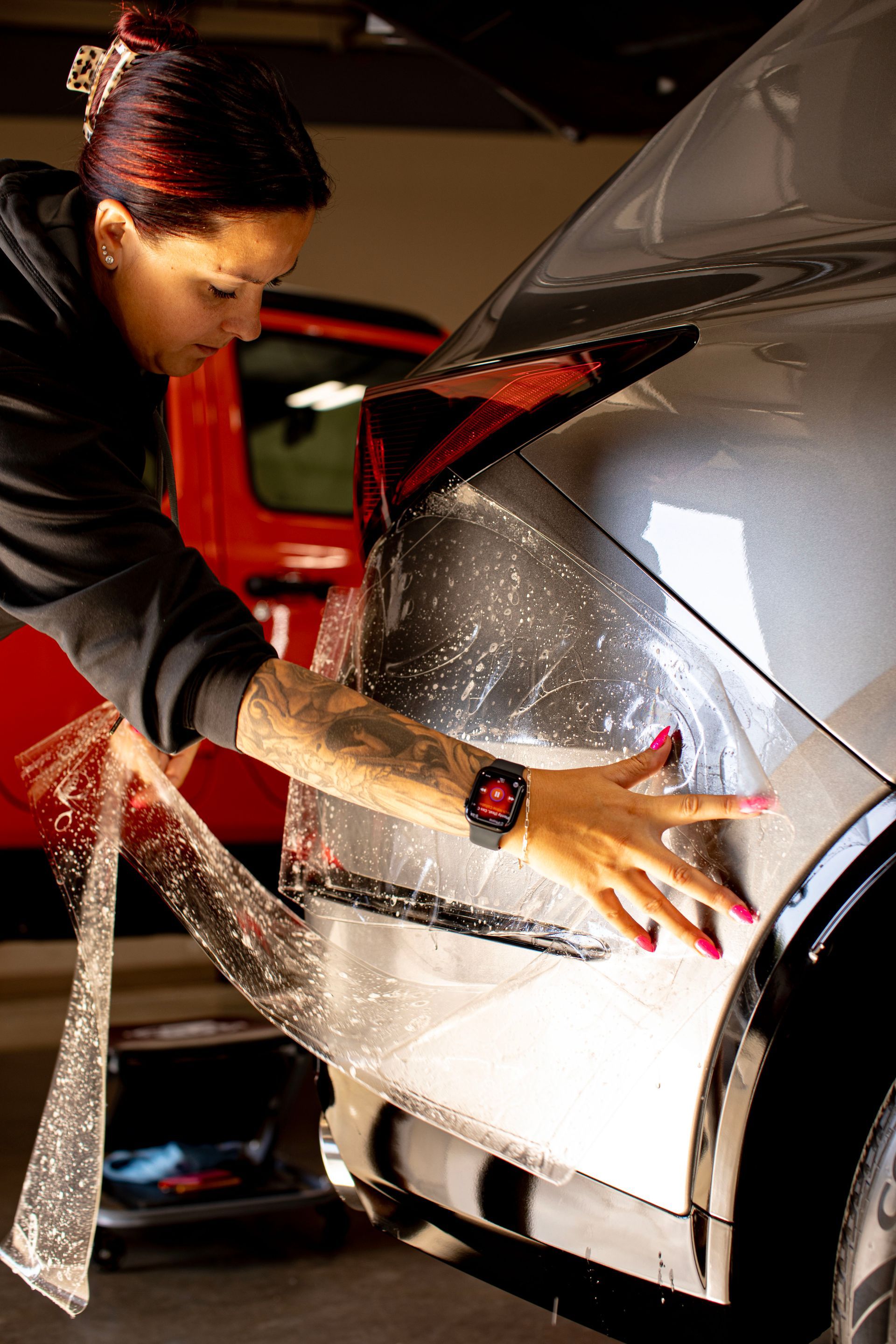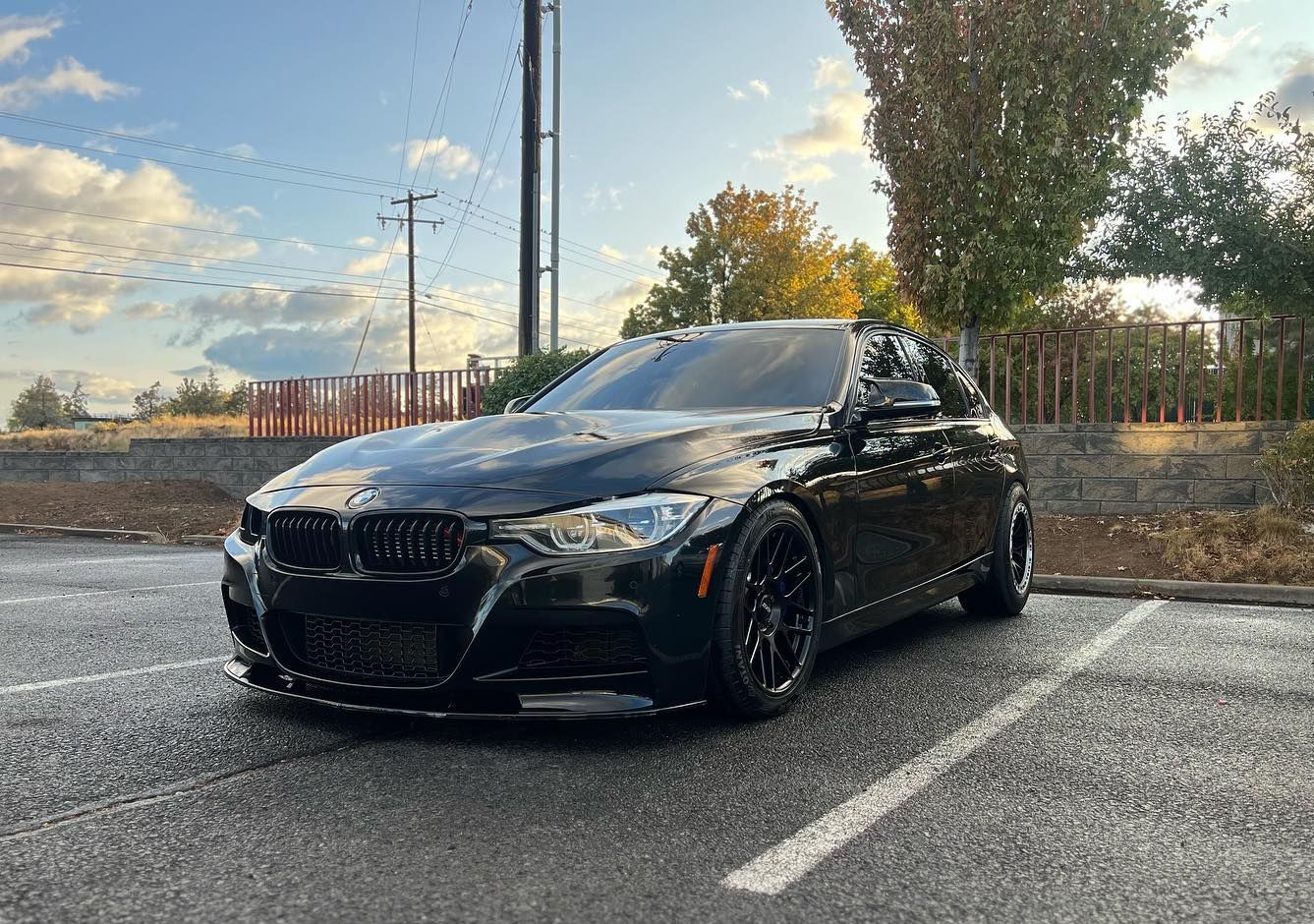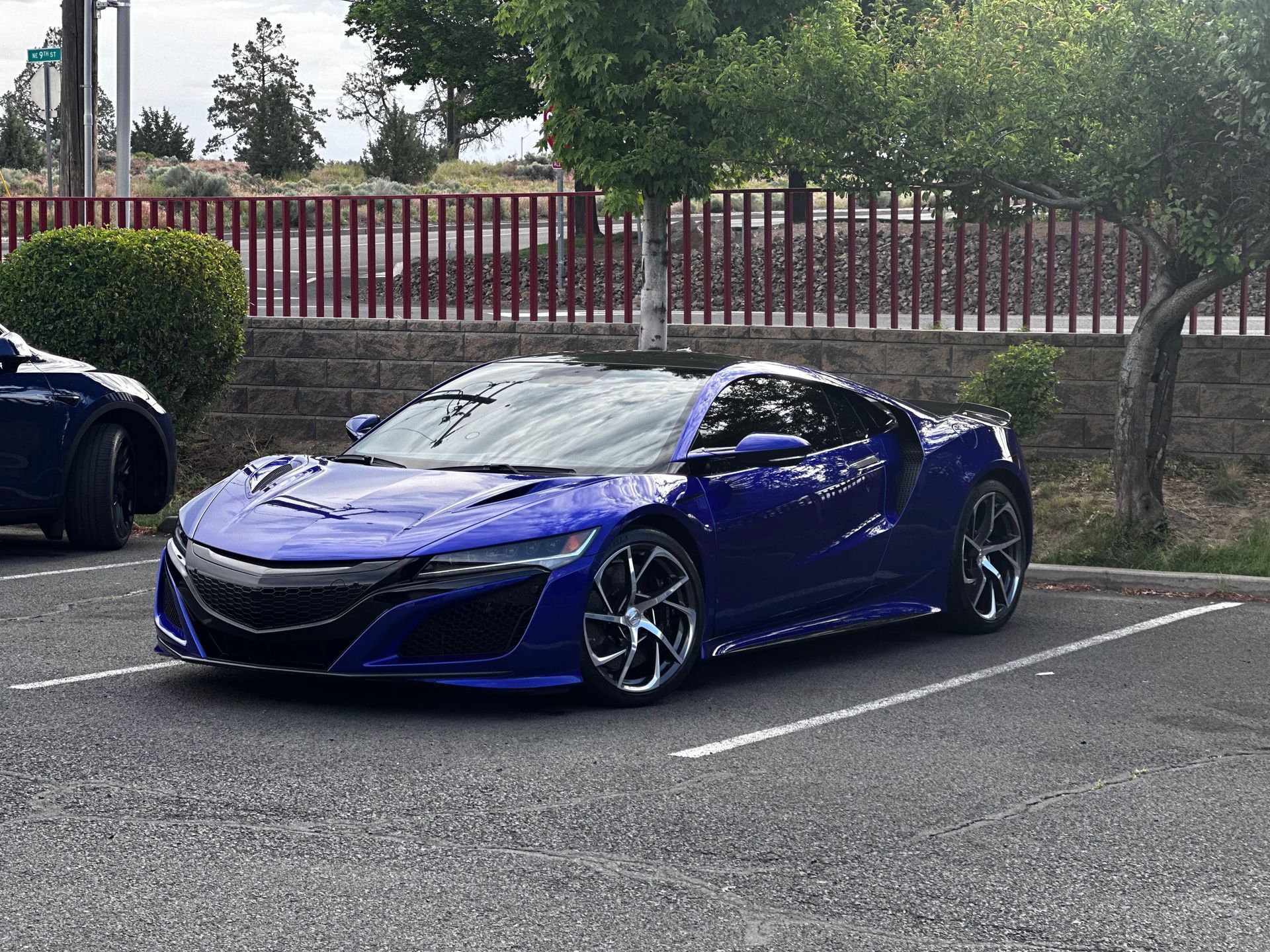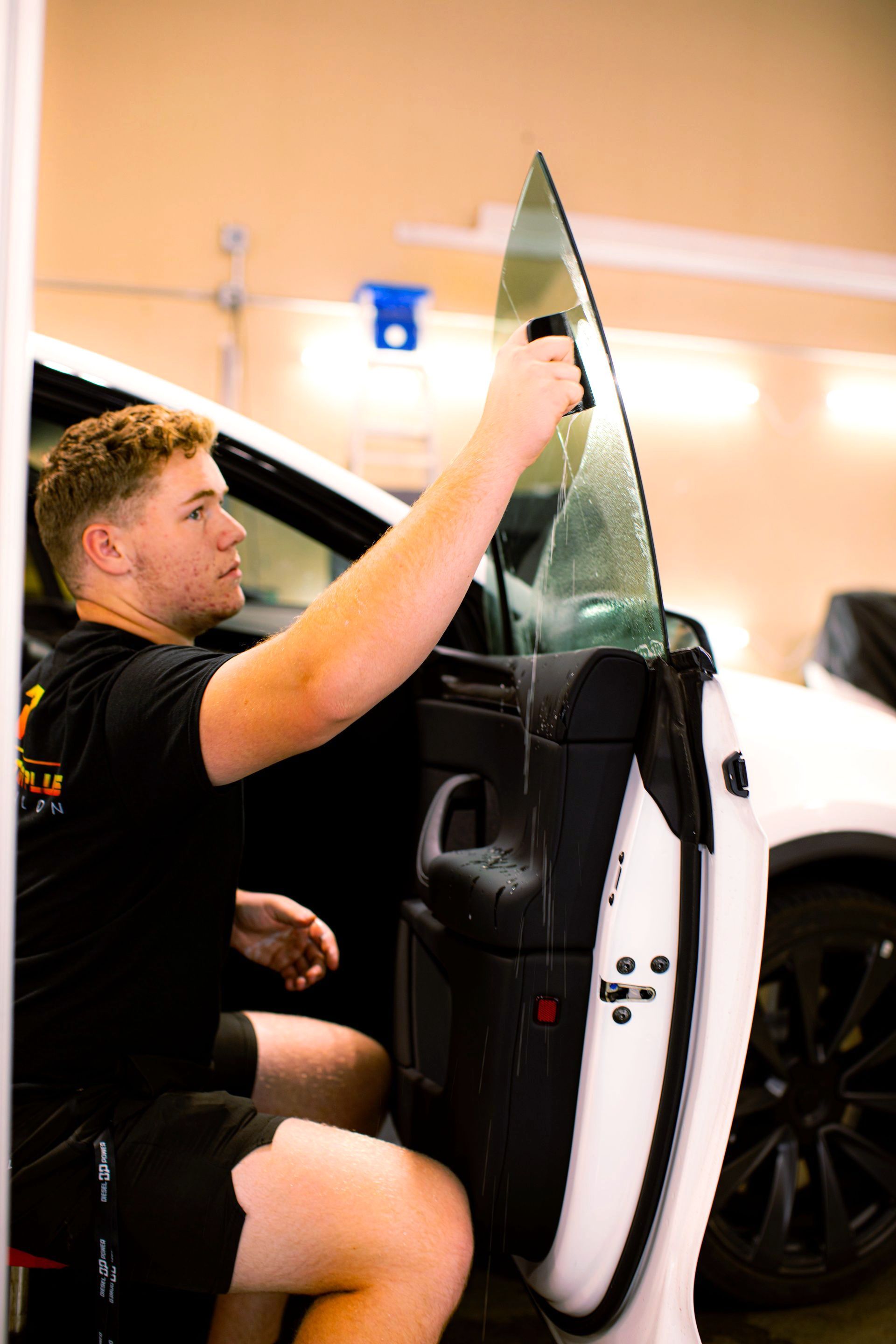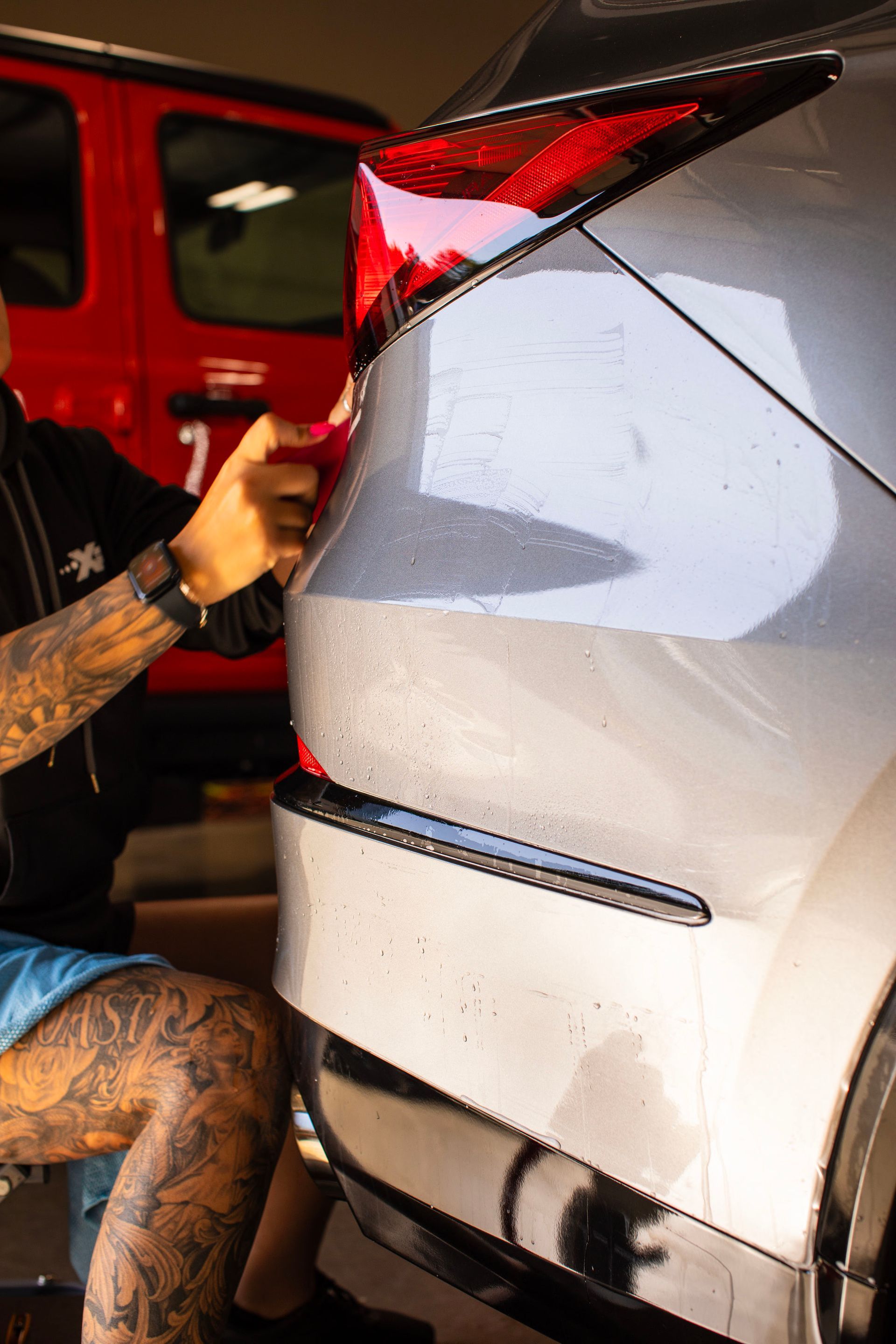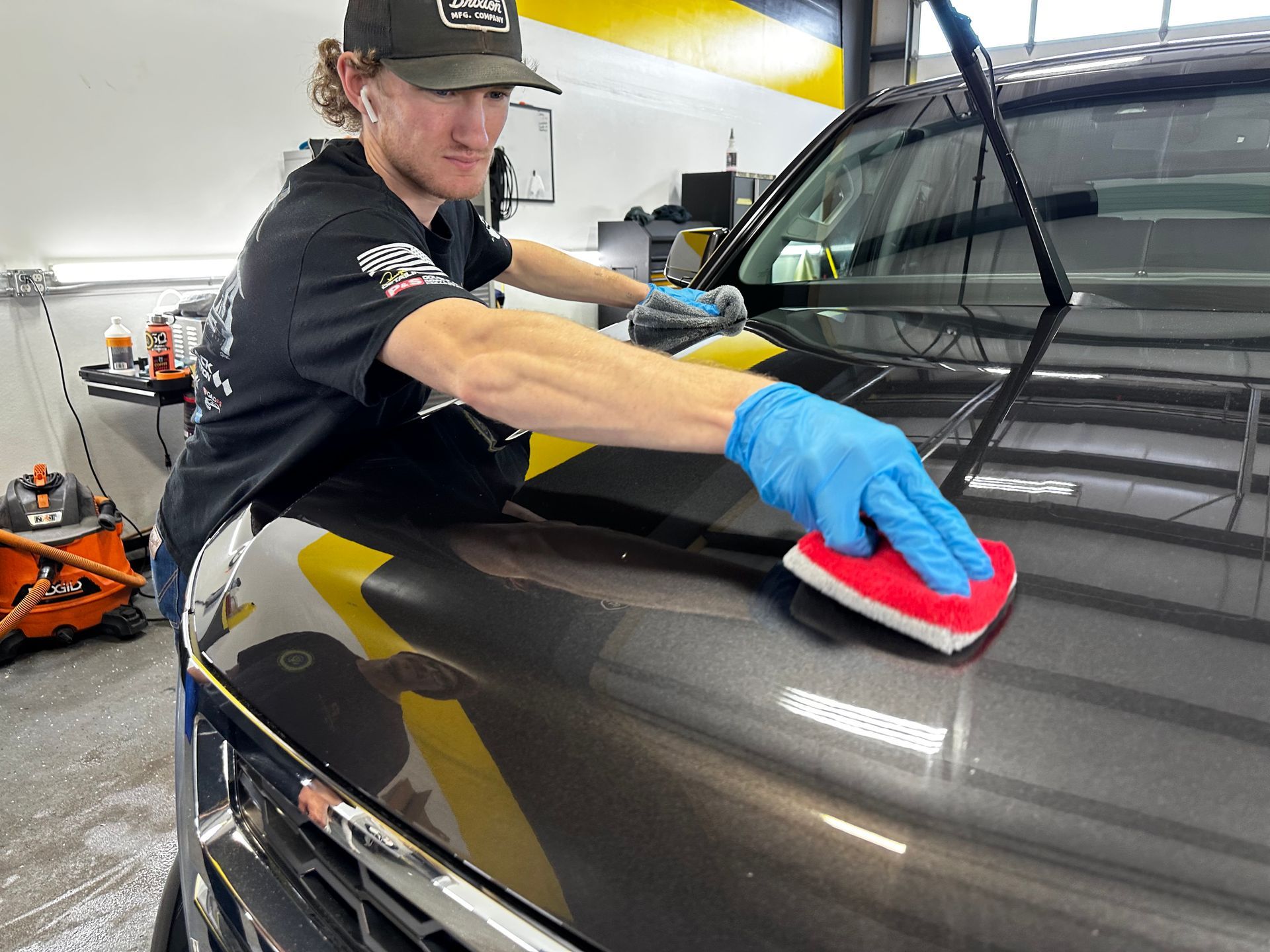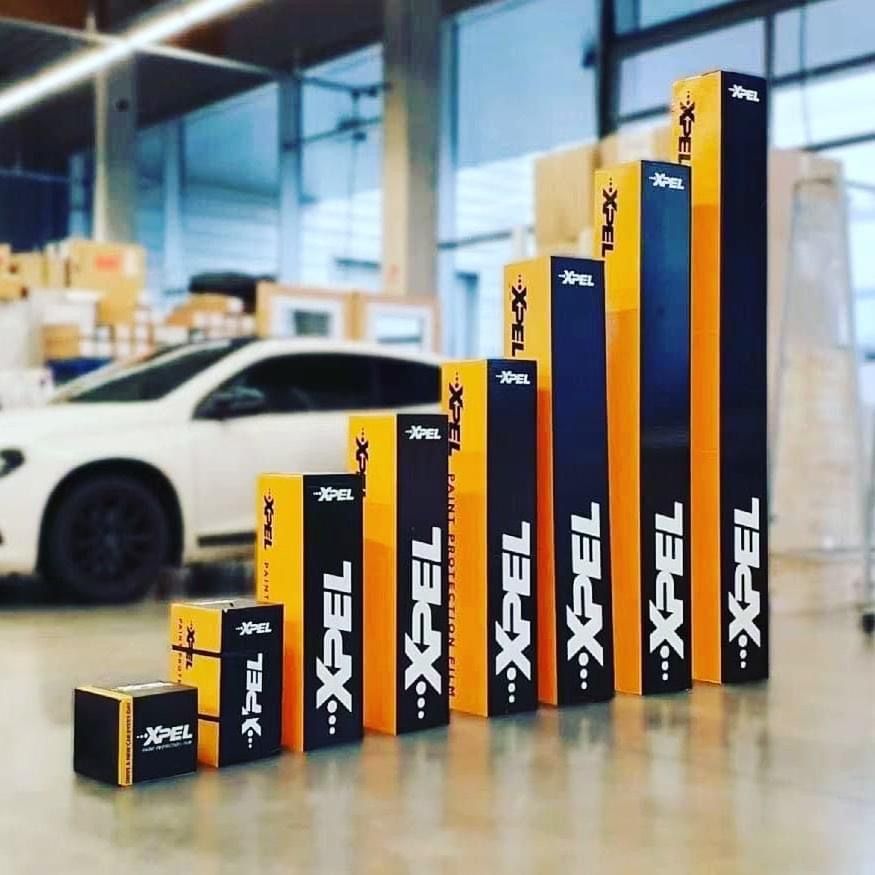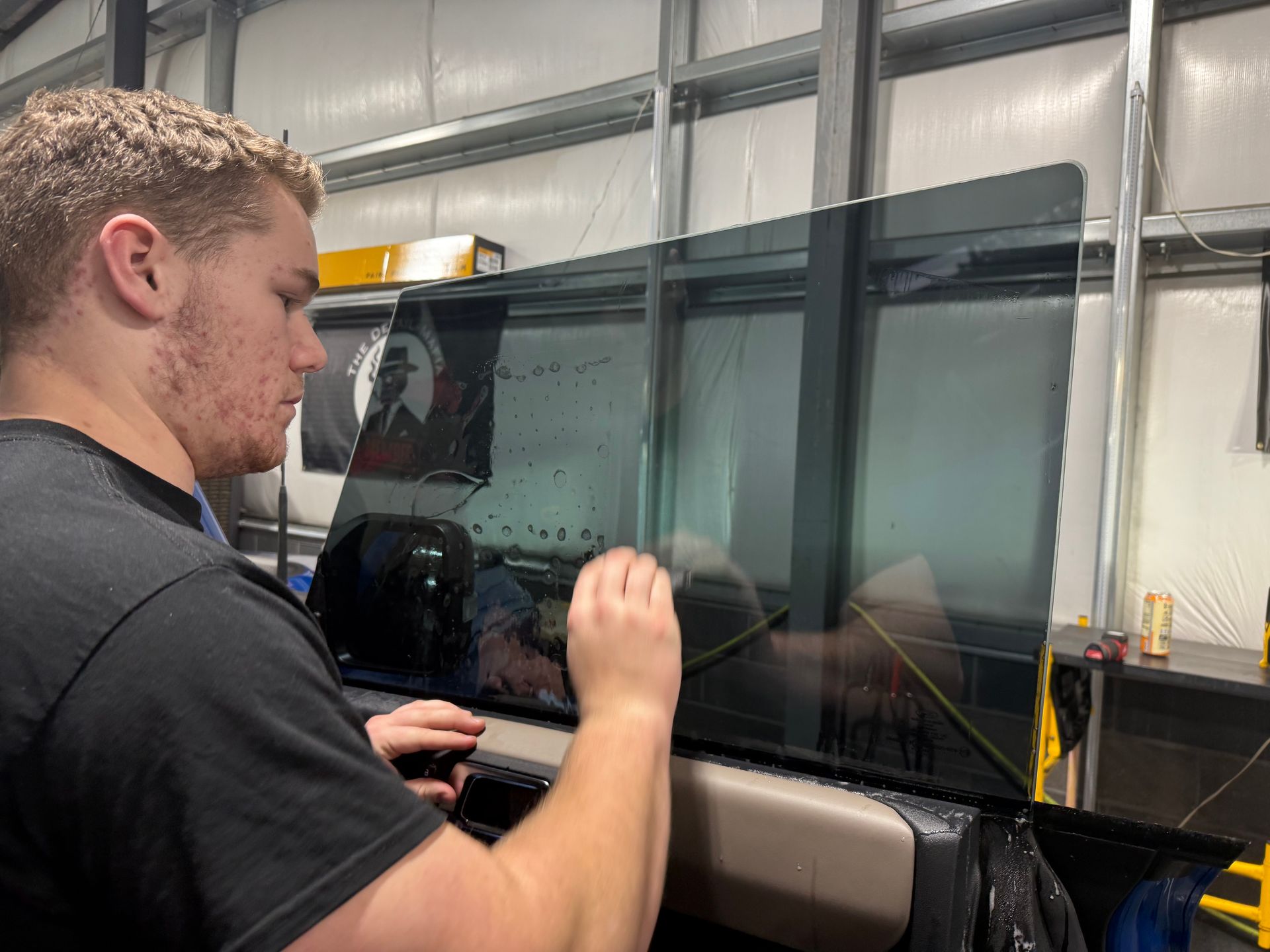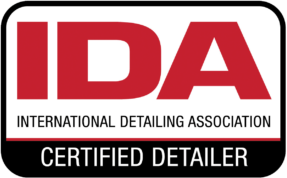Common Signs of Paint Protection Film Wear and Tear on Your Vehicle
GET A FREE ESTIMATETaking note of any wear on your vehicle's paint protection film is essential for those who cherish their car's gleaming exterior. Often subtler than a stone chip or a parking lot scratch, these signs can still affect long-term appearance and value if left unchecked. By knowing what to look for, you can catch issues early before they turn into expensive problems.
The common signs of wear and tear on paint protection film include visible scratches or scuff marks, bubbles or air pockets, discoloration such as yellowing, and cracks or tears. Recognizing these signs is crucial for determining when it may be time to replace the film to ensure continued protection of your vehicle's paint.
Identifying Wear on Paint Protection Film
The first step in identifying wear on your paint protection film is to inspect the surface thoroughly. It’s essential to look for common signs such as scratches, bubbles, and discoloration, which can all compromise the protective qualities of the film. Understanding these indicators can help you determine whether it’s time for maintenance or replacement.
- Inspect in Natural Light: Always conduct your inspection in natural light because indoor lighting often masks subtle flaws. Nature's light provides the best conditions to identify any imperfections that may need your attention. Begin by stepping back a few feet to get an overall view of your vehicle. Look for reflections in the surface; any distortions could mean something is amiss beneath the paint protection film. With a general view assessed, it's time to focus closely on the details.
- Detailed Close-up Inspection: Get close enough to examine the car's surface for any signs of damage. Pay special attention to edges and seams because these areas are often more vulnerable. You might discover small scratches or cuts that aren’t visible from afar, or even bubbles indicating improper installation or moisture trapped underneath. These imperfections not only detract from the appearance of your vehicle but can also lead to further deterioration if left unchecked. After closely inspecting the surface, the next step involves a direct interaction with the film itself.
- Perform a Touch Test: Gently running your fingers across the paint protection film can tell you a lot about its condition. A well-applied paint protection film should feel smooth and seamless under your fingertips. If you feel any roughness or notice lifted edges, this could signify potential adhesion issues that allow contaminants to reach the paint below. Be thorough in this check; the tactile response is a crucial indicator of how well the film is performing against wear over time.
Common Visual Signs of Damage
There are several unmistakable visual cues that indicate paint protection film damage. Understanding these signs not only helps maintain the aesthetic appeal of your vehicle but also ensures that it's protected from environmental hazards.
- Scratches and Scuffs: Minor surface scratches are expected over time, especially as your vehicle faces daily driving conditions. However, if you start to notice deep scratches that expose the underlying paint, this is a significant concern. Such damages can occur from various sources—think of rocks kicked up by passing cars or even a sharp edge during everyday use. It's worth noting that a paint protection film acts similarly to a football helmet; just as helmets scuff and scratch while providing essential protection, your PPF may show surface wear but still shield your car’s paint. Recognizing how to assess these scratches, therefore, becomes critical in determining whether your paint protection film still serves its protective function effectively.
- Bubbles and Air Pockets: The presence of bubbles trapped beneath the film is often a direct result of improper installation, although they can develop over time due to environmental factors. One car enthusiast shared how small bubbles began appearing shortly after applying the paint protection film. These seemingly innocuous air pockets can trap moisture against the paint surface, potentially leading to more significant issues like delamination if left unchecked. Observing these bubbles closely gives you insight into whether it's time for maintenance or replacement.
- Yellowing and Fading: Exposure to UV rays can cause noticeable yellowing or fading of the film, stripping it of its original clarity. Research shows that lower-quality films may begin to show signs of yellowing in as little as one year, diminishing both appearance and functionality. This degradation not only affects how your car looks but also reduces the film's ability to protect against scratches and other forms of damage. Investing in high-quality paint protection film upfront can mitigate these issues dramatically.
- Cracks and Tears: Lastly, any visible cracks or tears in the film are serious concerns that should not be ignored. Such damage compromises the integrity of the entire protective layer, rendering it ineffective at shielding your vehicle from environmental contaminants or physical impacts. The moment you notice such defects, taking immediate action is crucial; delaying could expose your paint to irreversible damage. Keeping a vigilant eye on these signs not only enhances your vehicle's longevity but also prepares you for understanding the underlying issues that lead to such wear and tear.
Causes of Film Deterioration
Exposure to extreme weather is perhaps one of the leading causes of paint protection film deterioration. Just imagine your vehicle sitting under the sweltering sun day after day; those high temperatures can induce brittleness in the film, making it susceptible to scratches. On the other end of the spectrum, freezing winter conditions can contribute to cracking, particularly in films not designed for such extremes. A paint protection film can lose its effectiveness when subjected to prolonged exposure to either high heat or bitter cold, leading to costly repairs down the line.
However, even if you’re fortunate enough to avoid extreme weather conditions, improper installation poses another significant risk. The integrity of your paint protection film heavily relies on how well it was installed initially. When the film isn't applied properly, air pockets can form beneath it. These pockets create bubbles that may eventually lead to delamination, where portions of the film begin to peel away from the paint surface. It's a troubling issue that highlights how critical professional installation is; countless online tutorials showcase DIY installations that went wrong, resulting in wasted time and resources.
Yet weather and installation concerns aren't the only threats; physical impacts also play a role in degrading the film’s quality. Consider a truck owner who frequently travels on rugged terrain—over time, they noticed specific areas of their vehicle showed increased wear from road debris and sand. This experience demonstrates how physical elements—like flying rocks or rough brushes during car washes—can significantly contribute to paint protection film wear and tear. Such abrasion not only diminishes visual appeal but also compromises the protective qualities intended by the film.
Handling Damaged Film
When you notice any signs of wear and tear on your paint protection film, acting promptly is crucial to avoid more significant issues down the line. Many car owners might feel overwhelmed by the thought of tackling damaged film, but addressing it can be simpler than it seems. The first step involves identifying the severity of the damage and deciding whether a temporary fix is enough or if a professional solution is necessary.
- Temporary Patch Repairs: For minor tears or small cracks, applying automotive-grade vinyl patches can be an effective temporary solution. These patches are designed specifically for use on vehicles and will offer a protective layer until you arrange for professional evaluation. To ensure the best adhesion, it's essential to clean the surrounding area first; this removes any dirt or debris that could interfere with the patch. After preparation, carefully align the patch over the damaged area and press down firmly to seal it. This method isn't a long-term fix but will safeguard your paint protection film from further deterioration until you can consult an expert. However, for more severe damage, such as extensive bubbling or large tears, it’s vital to consider removal rather than attempting a temporary fix.
- Professional Removal and Replacement: If your paint protection film has suffered significant damage, enlist a professional for its removal and replacement. Certified installers possess specialized tools like heat guns that allow them to carefully peel away old film without damaging your vehicle's underlying paint. They know how to manage various challenges during this process, ensuring that your car remains in pristine condition. It’s recommended to look for certified professionals who not only have experience but also provide warranties on their work. This warranty acts as insurance against potential flaws resulting from installation, giving you peace of mind knowing that any future problems can be rectified at no additional cost.
Maintenance Tips for Longevity
Regular maintenance can significantly extend the life of your paint protection film. One of the key aspects is the frequency and method of washing your vehicle. It's essential to wash your car weekly with a pH-neutral soap, which is gentle enough to eliminate contaminants like dirt, tree sap, and road grime without harming the paint protection film. Avoid using pressure washers; the forceful spray can lift edges or cause bubbles, negating the very benefits you sought when applying it.
Beyond washing, inspections are equally vital. Conducting frequent inspections is crucial in preserving your film's integrity. Set a routine to check your paint protection film monthly, paying special attention to high-contact areas like door edges and bumper corners. These zones often experience more wear due to everyday use, accumulating scratches or lifting edges over time. If you catch these signs early on, you could save both time and money since minor issues can often be addressed before escalating into significant damage that requires replacement.
Additionally, using protective coatings can greatly enhance your PPF's resilience. Applying a ceramic coating over your paint protection film introduces an extra layer against UV rays and minor abrasions. Ceramic coatings can significantly bolster the hydrophobic properties of your film, helping water bead up and roll off instead of pooling and causing potential damage. This advanced layer shields your vehicle while simplifying maintenance since dirt tends to stick less aggressively to surfaces coated with ceramic. Imagine how satisfying it feels to see rain effortlessly run off your car without leaving behind a trail of grime!
Remember that consistent care involves washing with pH-neutral soap, regular inspections focused on high-contact zones, and using protective ceramic coatings. Each element enhances the longevity and performance of your paint protection film. By integrating these practices into your vehicle maintenance routine, you ensure that your investment looks great for years to come.
Effects on Vehicle Appearance
A vehicle’s appearance is often the first aspect that draws attention. When the protective film starts to wear, it can show in ways that detract from its overall aesthetic. The beauty of a car lies not just in its sleek curves and bold color but also in its immaculate finish. When paint protection film begins to degrade, you may notice signs such as yellowing, bubbling, or peeling edges. These imperfections disrupt the clean lines and shiny surfaces that contribute to your vehicle's allure. Such visual deterioration can create an impression of neglect or poor maintenance, which any proud car owner loathes.
While some individuals might argue that a few scratches here and there don’t matter much, many car enthusiasts and potential buyers perceive wear as evidence of poor care. This sentiment is echoed by studies highlighting how aesthetics significantly influence buyer perception. If you're considering resale down the line, ignoring these signs could result in a lukewarm response from buyers who instinctively assume that visible flaws mirror deeper problems. It’s akin to viewing a long-neglected garden—no one wants to buy it based solely on imagined potential if it looks like a wild thicket instead.
Regular inspections can help catch these issues early on, allowing you to address minor blemishes before they evolve into major concerns. Even something as simple as regularly washing your vehicle and ensuring that the paint protection film remains free from debris can significantly prolong its life while keeping it looking fresh. Moreover, using high-quality ceramic coatings designed for wrapped cars can provide an additional layer of protection against UV rays, dirt buildup, and environmental contaminants. Investing time into maintaining your vehicle's appearance pays dividends—not only does it keep you happy as you admire your car daily, but it helps retain its value when it's time for upgrades.
Vehicles with visible paint protection film damage can experience price reductions of up to 10% during resale. Thus, maintaining the integrity of the film becomes essential—not merely out of vanity but for the sake of value retention as well. A well-maintained appearance speaks volumes about how much you respect and care for your investment, influencing both pride in ownership and financial outcomes in future transactions.
Top-Tier PPF Installers in Redmond, OR
Protect your vehicle with confidence by choosing Perfection Plus Auto Salon, your top-tier paint protection film installers in Redmond, OR. Our skilled technicians utilize cutting-edge techniques and premium films to ensure your car receives the highest level of protection from road debris, scratches, and environmental damage. Trust us to deliver a flawless installation that maintains your vehicle’s sleek appearance and keeps it looking new. Contact us today to schedule your installation and safeguard your investment with expert care. Call us at (541) 598-6193 to get started!
